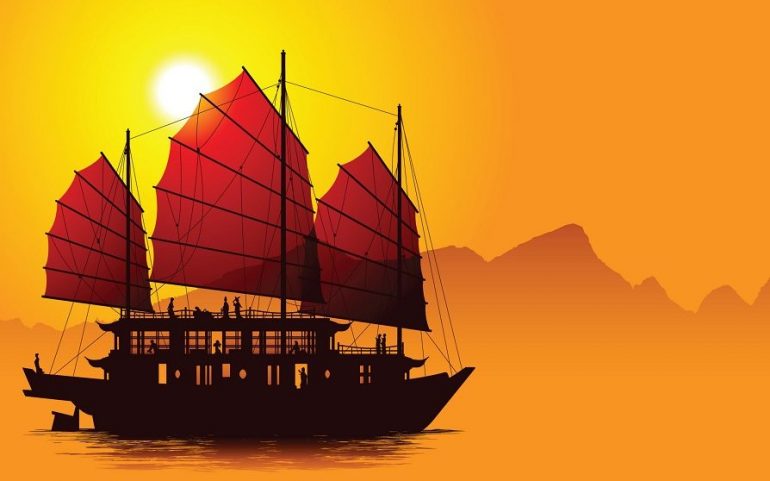In ancient China, ship design took full advantage of the creativity of the Chinese people, and the ships were remarkable even in terms of modern engineering concepts for their ingenious designs.
The rigs, structures, and harnessing of propelling forces were designed to work with the prevailing weather and water conditions. While there were a number of ship designs in ancient China, the towered ship of the Han Dynasty, and the Chinese junk were two of the most studied designs.
Towered Ships of the Han Dynasty
Towered ships had been around before the Han Dynasty of approximately 220 BCE to 200 CE. Indeed water-based transportation in ancient China goes back as far as recorded history. Canoes, wooden boats, boats with oars, and rafts have been the foundation of ancient Chinese ships for thousands of years.
But the towered ships were impressive even by modern standards, some standing over 30 meters tall (100 ft.). The towered ships were basically heavily weaponized marine fortresses that could sail. Spears and banners were at hand, and the towered ships were designed for both offense and defense.
Towered Ships in War
Though towered ships were too bulky to be nimbly moved, they were most often used as control vessels whose moves were intricately coordinated with the movements of other warships in water battles.
Tower ships generally had three stories from the deck of the ship upward. Each story was surrounded by fender walls that would be about waist-high. The first floor not only had fender walls, but also a defensive barrier. Both the barrier and the fender walls had holes for arrows and spears, for long distance and close combat respectively.
The Chinese Junk
The famous ancient ship known as a “junk” was also developed in China during the Han Dynasty from roughly the third century BCE until the third century CE. By the end of the Han Dynasty, junks were used on the ocean, and in subsequent dynasties saw the development of the junk into a vessel for long ocean voyages.
The technology involved in the sail designs of the junk eventually influenced western ship designs, but early westerners were quick to see how the sails on junks were ingeniously designed. The flexibility of the sails made the ships fast and easy to sail.
The sails could be moved inward along the ship’s long axis, allowing it to sail into the wind. The sails also had battens, which were horizontal pieces that strengthened the sails, often preventing large tears in the sails.
Chinese Junk Influence on Modern Designs
In fact, the most efficient catamarans and windsurfing vehicles today have sail designs that are similar in many ways to the junk sails that were used in ancient China. The sails do not face forward, but are oblique and maneuverable.
This allows the sails to be oriented in coordination so that the sails to the back use the wind off the most windward one to use that wind to make the vessel sail more efficiently.
With the Chinese junk, if winds were too strong, sailors could diminish the surface of the sails, therefore allowing the ships to sail in more varied conditions than traditional ship designs.
Ships in ancient China were remarkably sophisticated vessels and utilized many creative design features for optimum control over sailing power. So elegant were the concepts behind the designs of the towered ships and the Chinese junks of the Han Dynasty era that they are still used now, 2,000 years later.





